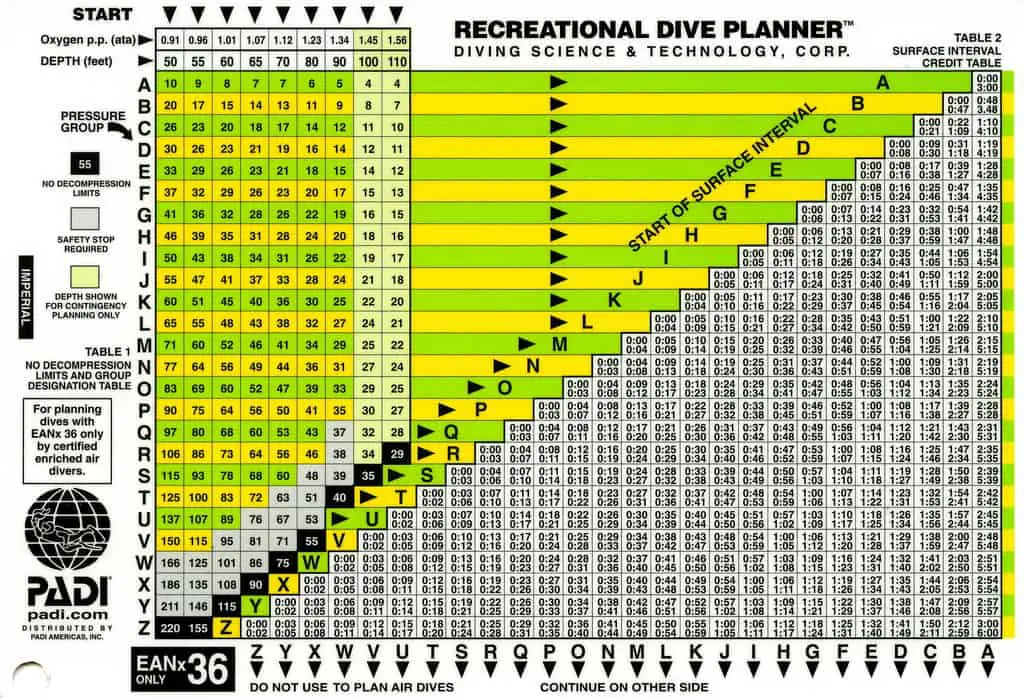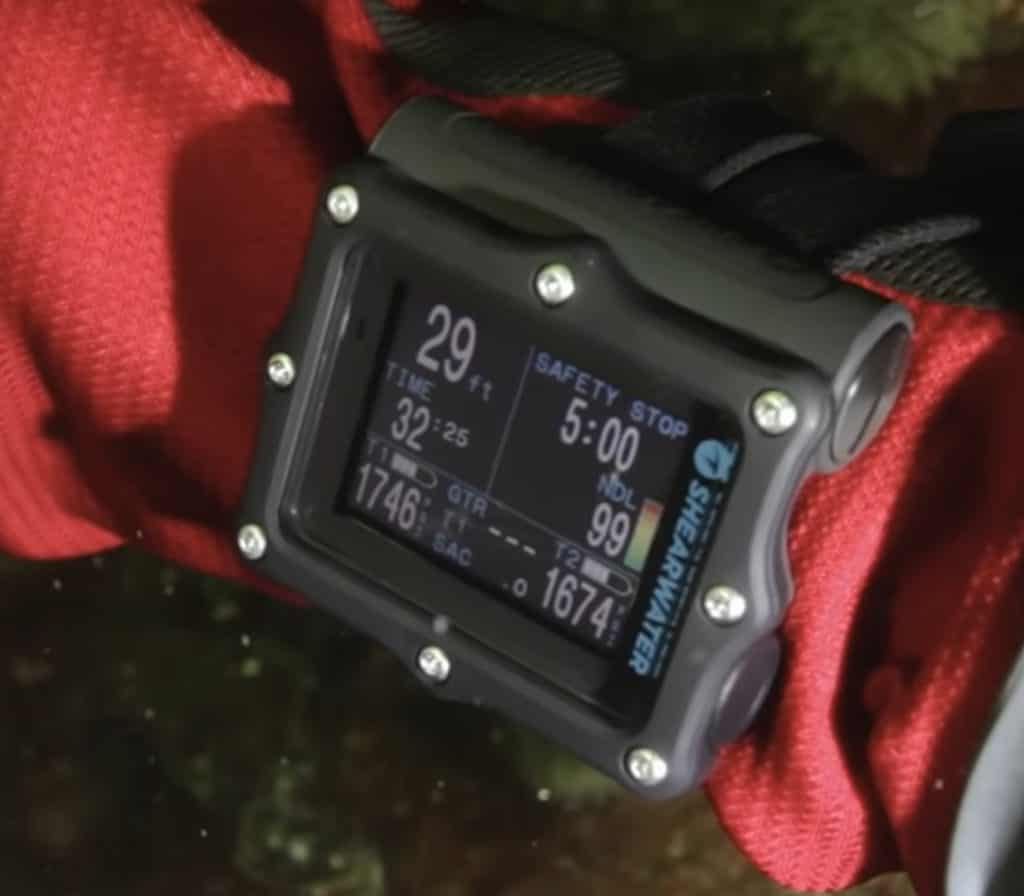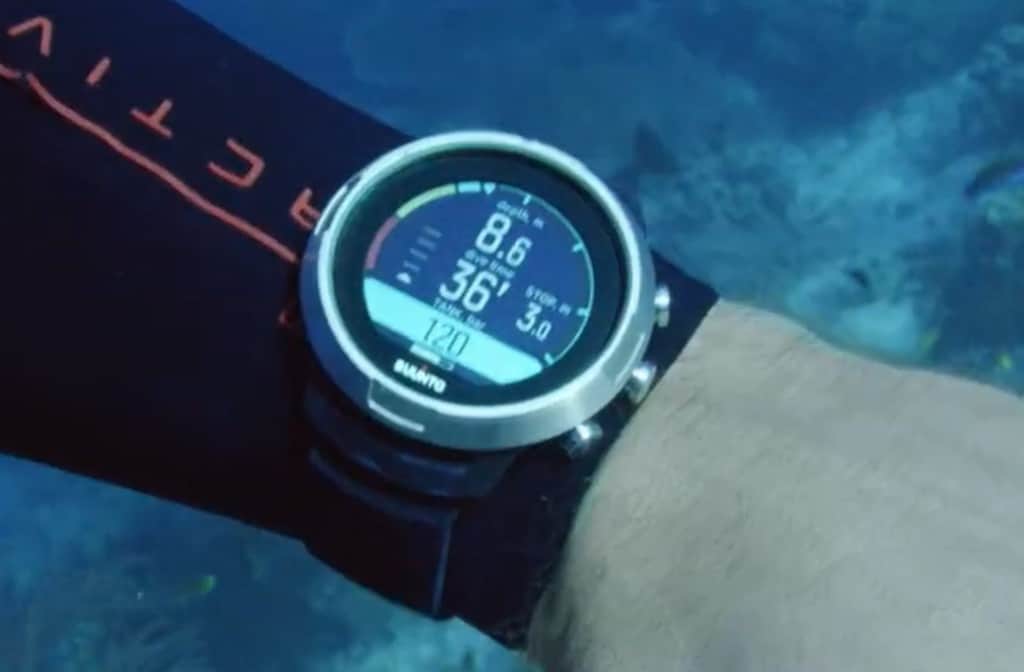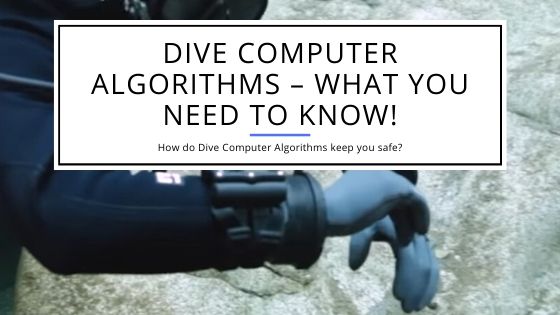Dive Computer Algorithms – What you need to know!
When you start diving you are taught the use of dive tables. You should also be taught the theory behind them.
Today unfortunately many divers know that dive tables exist but have no idea why they exist. The same is often true when divers use dive computers. Only a few have any idea what type of algorithm the dive computer uses and how it calculates dive times and intervals that endure your well-being.
Dive Tables
Dive tables are the underlying element for all personal dive computers. When you get your scuba certification you most likely were exposed to the dive tables from PADI. These tables are the only ones that have been tested for recreational diving.
However, the big drawback of them is that they aren’t easy to use and that they assume you stay at a specific depth without taking the descent and ascent into consideration. They also are rather rigid when it comes to multiple dives.
Lastly, you end up with no good way to calculate any safe limits if you use multiple gas mixes for different dives or even switch gases during a dive.

Dive Computer Algorithms
Any dive computer uses a representation of dive tables as the essential element of its calculations and algorithms. The algorithm calculates dive limits constantly by taking the current values (depth, time) and matching it up or calculating the limits based on these underlying dive tables.
Whether you use a wrist watch or console dive computer, you will find sophisticated and safe algorithms in either style. The main purpose of these computers is to keep you safe from decompression sickness.
Different manufacturers use different algorithms for their calculations of safe dive limits. The best-known algorithms are:
Haldane/Spencer Algorithm
These computations are based on the PADI tables that were developed by Rogers and Powell. Oceanic and Sherwood use this algorithm for their diving computers.
Modified Haldanian Algorithm
This algorithm was originally used by Mares and featured some updates to the original Haldane/Spencer version.
Bühlmann Algorithm
This algorithm is probably one of the most known ones. It’s based on the research of Dr. Albert A. Bühlmann, a Swiss physician. He based his work on the research from Haldane and improved upon it. The results of the computations of the underlying data are often shown in tables.
Since the 60’s when he started his research, a number of updated variants of the algorithm which are in use today in a number of dive computers. One of the versions that is commonly used in scuba computers is the ZHL-16C. It’s adjustable and used in a number of technical dive computers as it can easily be manipulated through conservatism settings that make it more liberal or conservative in its calculations.

Reduced Gradient Bubble Model (RGBM) Algorithm
The RGB model is based in part on Wienke and Hamilton’s research and work. The first dive computer manufacturer to incorporate this technology was Suunto.
In the meantime, it’s used by nearly every manufacturer. The underlying computation considers microbubbles in the bloodstream coming from the nitrogen build-up. The thought behind it is that these microbubbles are the starting point of larger bubbles which then lead to DCS (decompression sickness).
Some other manufacturers use adaptations or different algorithms but mostly the above mentioned are used for modern dive computers.
Are all algorithms the same?
One thing to be aware of is those dive computers with different algorithms will produce different results! Even if they use the same underlying basics, like for example an RGBM model, the results can and will vary. This is based on the fact that many manufacturers add conservative additions to the results to ensure to keep you out of danger.
This makes sense as a dive computer in the first place should keep you safe. This, in some cases, can even lead to the situation that using a dive table might give you more time underwater than using a dive computer. However, in any case, I would rather err on the side of caution than to risk being too aggressive and ending up with decompression sickness.
Oceanic specifically has two different mathematical models coded into their dive computers. You get those dual algorithms whether you use their entry models like the Veo or high-end devices like the OCi. You can pick which of these dual algorithms to use. The first option is to use the DSAT algorithm (Haldane/Spencer) which matches the PADI dive tables. Or, if you want a different conservatism or simply want to match your dive buddies results better, you can use the Pelagic Z+ algorithm which matches the more mainstream RGBM algorithms in other dive computers.
There’s no ‘best’ algorithm out there. They all keep you safe (within limits) and guide you during decompression. However, all of these algorithms have some downfalls.
Specifically, there are issues and inconsistencies that none of them take your physical condition into consideration when calculating safety dive limits. While all dive computers measure how long your dive took so far, how many dives you took before, etc., none considers your heart rate, your weight, etc.
The only influence you have as a diver is that you can in many models set conservatism settings. This allows you to make the algorithm more conservative to reduce any chance of issues during your dive(s).

Conclusion
You should be very honest with yourself when looking at your current condition. Your dive computer does not know whether you worked out a few hours before diving and are somewhat dehydrated. It does not know whether you got enough sleep or not.
Future computers will hopefully have features that include the capability to measure your physical condition at the time you go into the water. Then take for example your breathing into consideration through how fast the pressure in the tank gets reduced. Taking all these factors into account should allow the mathematical computations to keep you safer than any of the already safe algorithms used today.
Many factors like this will become part of dive computers in the near future. Until then you have to assess yourself before diving.

